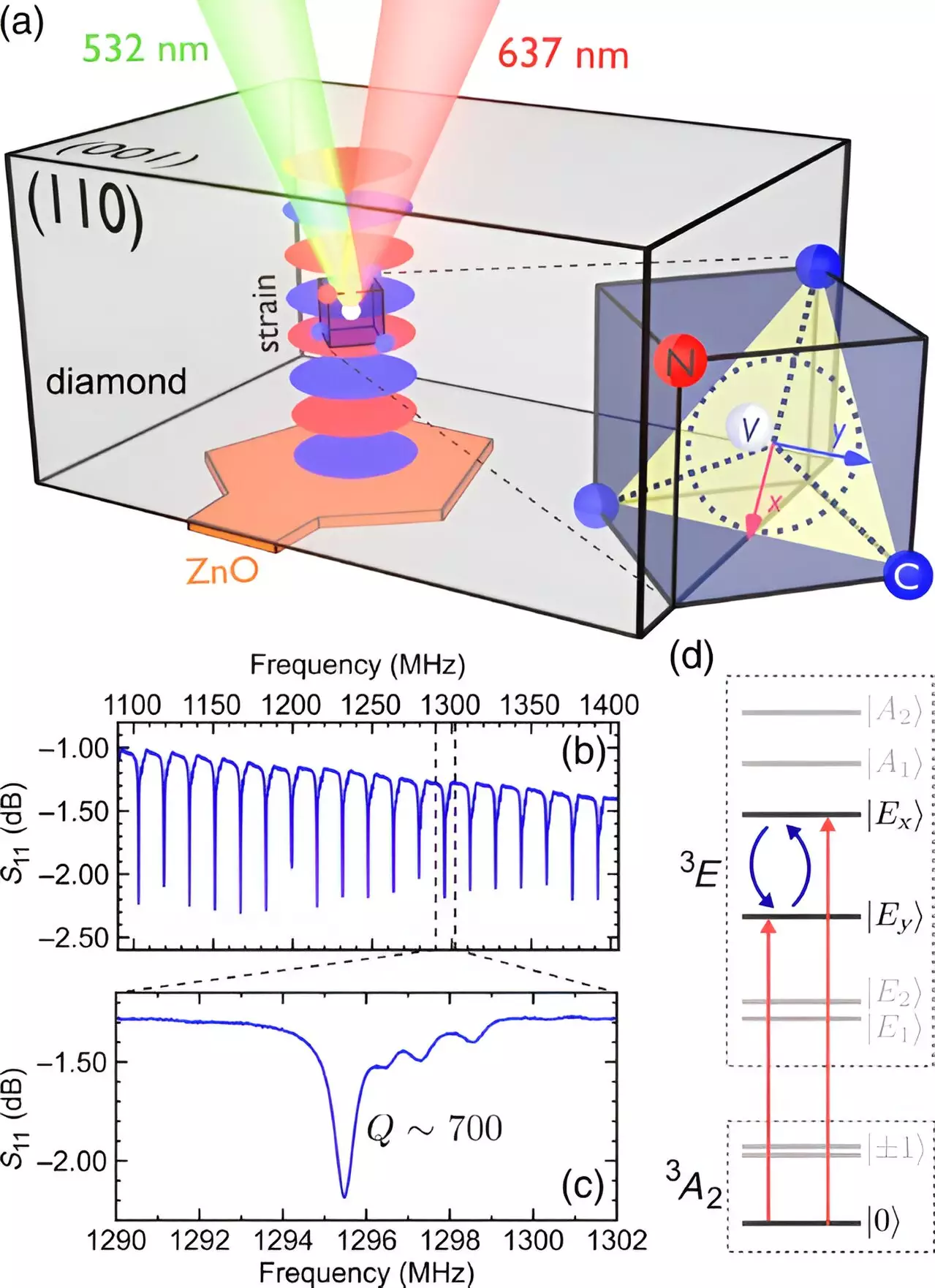The manipulation of microscopic particles such as electrons is crucial for the advancement of quantum information technology. Cornell University researchers have recently delved into the realm of utilizing acoustic sound waves to control the motion of electrons as they orbit lattice defects in diamonds. This groundbreaking technique showcases the potential to enhance the sensitivity of quantum sensors and revolutionize the field of quantum devices.
Gregory Fuchs, an esteemed professor of applied and engineering physics, along with his postdoctoral associate Brendan McCullian, collaborated with Erich Mueller, a physics professor, and his doctoral student Vaibhav Sharma, to conduct experiments on the influence of sound waves on electron orbits within diamond lattice defects. The study, titled “Coherent acoustic control of defect orbital states in the strong-driving limit,” was published in the journal PRX Quantum.
McCullian ingeniously crafted a microscopic speaker on a diamond chip surface, operating at a frequency that perfectly matched an electronic transition. Through meticulous techniques akin to those employed in magnetic resonance imaging, he successfully demonstrated the coherent control of a single electron within the diamond chip.
In the realm of quantum technology, qubits play a vital role as the quantum equivalent of classical computer bits. These qubits must maintain coherence, or stability, to fulfill their intended functions. Unfortunately, coherence is fragile and easily disrupted by environmental fluctuations, such as neighboring electron movements.
For years, scientists have extended qubit coherence times using spin resonance techniques involving microwaves and magnetic fields. Fuchs and his team endeavored to expand this methodology to the acoustic domain, aiming to enhance orbital coherence. By acoustically driving the orbital states and applying established spin resonance techniques, the researchers achieved significant progress in understanding and controlling electron behavior.
Fuchs’ research contributes to the extensive knowledge of the nitrogen-vacancy (NV) center, a critical qubit in diamond lattices for sensing and quantum networking applications. Additionally, the study offers innovative solutions to combat environmental disturbances that cause spectral diffusion, posing challenges in maintaining stable optical transitions essential for quantum networking.
The collaboration between experimental and theoretical teams, as exemplified in this project, highlights the importance of interdisciplinary cooperation. While experimental techniques were honed in Fuchs’ lab, the contribution of the physics department team was instrumental in providing theoretical insights and framing predictions.
The utilization of acoustic sound waves to manipulate electron motion represents a significant leap forward in the realm of quantum technology. By merging the principles of spin resonance with the acoustic domain, researchers have opened new avenues for improving qubit coherence and enhancing the capabilities of quantum devices. The synergistic collaboration showcased in this study underscores the necessity of interdisciplinary approaches in driving scientific innovation forward.


Leave a Reply